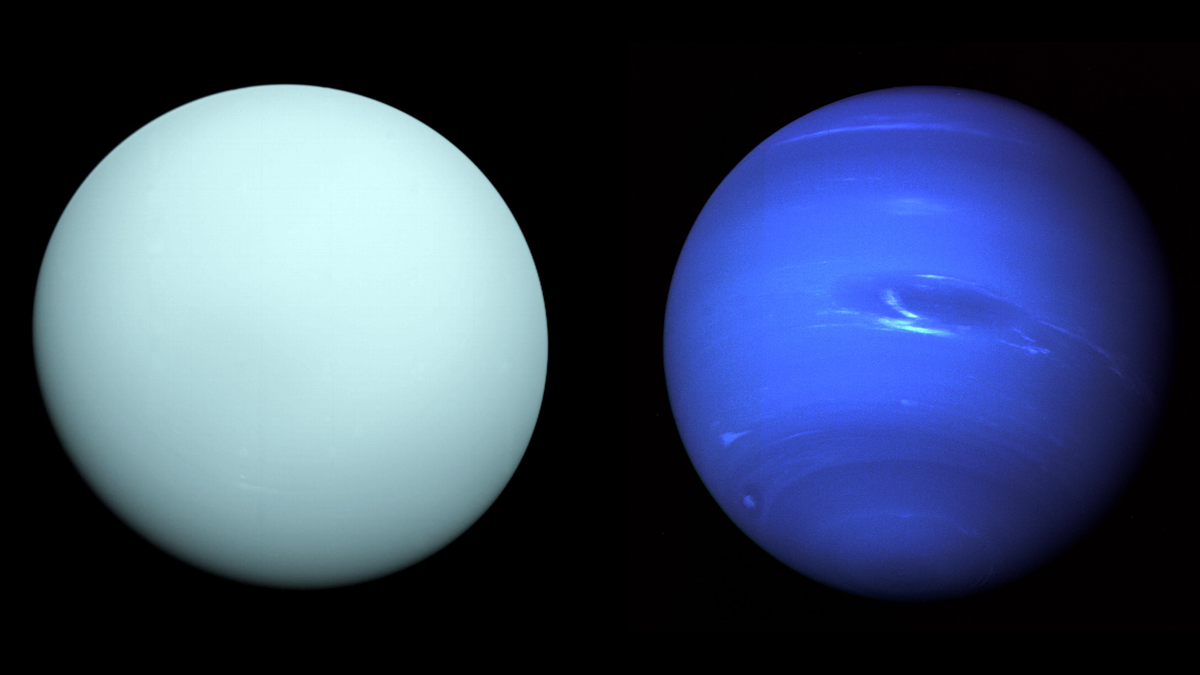Source: Journal of Geophysical Research: Planets
The ice giants, Uranus and Neptune, are the least understood planets in the solar system. They remain the only worlds that an orbital spacecraft has not visited. Our limited understanding of them derives largely from the flyby of NASA’s Voyager 2 probe and subsequent observations with the Hubble Space Telescope. Yet the ice giants may be most representative of the extrasolar planets in our local vicinity.
Why these planets appear so different in color despite having very similar physical properties, including vertical temperature profile and atmospheric composition, is a mystery. Past investigations have attributed Neptune’s deeper blue largely to excess absorption in the red and near infrared from atmospheric methane. But the two planets have always been treated independently despite their similarities. Without a comprehensive atmospheric model, direct comparisons between the worlds remain difficult.
Irwin et al. attempt to fill this gap by developing a single atmospheric model consistent with the spectral observations of both planets. They fit near-infrared spectra collected by Hubble, as well as the ground-based Gemini and NASA Infrared Telescope Facility (IRTF) telescopes, to a three-layer aerosol model.
The topmost layer of this structure consists of haze resulting from photochemistry involving unknown atmospheric constituents. This haze is then somehow concentrated into a stable layer spanning from 1 bar down to approximately 2 bars. This main haze layer is roughly twice as thick on Uranus as it is on Neptune, giving Uranus a distinctly paler blue color.
In addition, at the base of the intermediate layer, the haze particles serve as condensation nuclei for atmospheric methane. These now heavy methane ice particles snow downward to a depth of 5–7 bars, where they heat up enough for the methane to evaporate. In this deepest layer, surviving haze particles become nucleation sites for another round of condensation, this time involving hydrogen sulfide.
This combined model mirrors the significant similarities that appear to exist between the ice giant planets. Yet much of the mechanism and its constituent molecules remains unknown. This issue is likely to persist until the arrival of a Uranus orbiter, the development of which has been identified as a primary goal in the most recent planetary science decadal survey. (Journal of Geophysical Research: Planets, https://doi.org/10.1029/2022JE007189, 2022)
—Morgan Rehnberg, Science Writer

